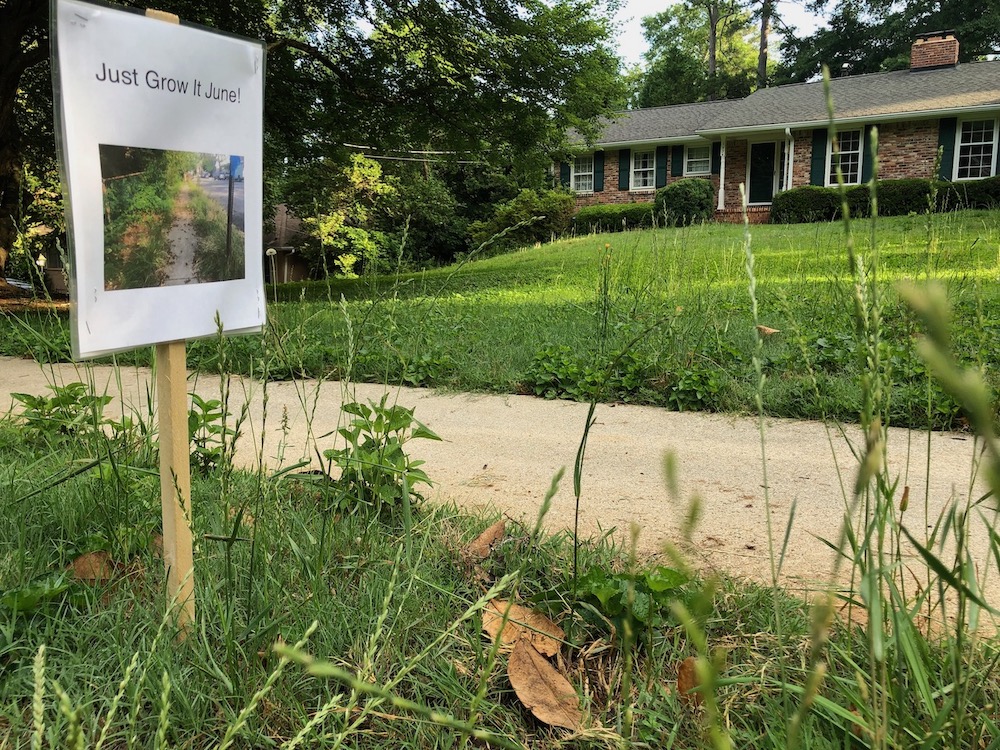
It’s summer and the humidity is here with a vengeance in the southeastern U.S. As you may know, I don’t use relative humidity to gauge how humid the outdoor air is. Why? For starters, the humidity can get up to 100% even on a cold day so how does knowing only that metric help?
Many people get confused on this matter, saying things like, “It gets up to 98°F and 95% relative humidity where I live.” Maybe, but almost certainly those two things don’t happen at the same time. If they did, they’d have a new world record for dew point temperature.
Anyway, here are a few fun facts about the dew point temperature.
1. Under normal conditions* here on the surface of Earth, the dew point temperature cannot be higher than the air temperature (dry bulb). That puts a cap on your maximum dew point. So if you wake up and the outdoor temperature is 59°F (15°C), you know the maximum dew point. It’s 59°F (15°C).
2. When the dew point and dry bulb temperatures are equal, the relative humidity is 100%.
3. Standard indoor design conditions from the Air Conditioning Contractors of America (ACCA) are 75°F (24°C) and 50% relative humidity. Thus, the dew point temperature for indoor air at those conditions is 55°F (13°C).
4. Psychrometric calculators are available as apps for your smartphone to let you find the dew point temperature for any dry bulb temperature and relative humidity. I use one called PsychroApp.
5. Here’s my rough guide for the dew point temperature’s impact on comfort when you’re outdoors in summer:
A. Dew point less than 60°F (~15°C) ⇨ comfortable
B. Dew point in the 60s Fahrenheit (~15-20°C) ⇨ moderately comfortable
C. Dew point higher than 70°F (21 °C) ⇨ uncomfortable

The dew point temperature here in Atlanta as I write this is 71°F (21.5°C). We’re definitely feeling the humidity now. That’s not a comfortable dew point temperature, and the more active you are, the worse it feels. I tried to be a little more comfortable this summer by continuing No Mow May with Just Grow It June. My wife, however, did not go for the idea.
* Abnormal conditions would be supersaturation, as can happen high in the atmosphere. The dew point can go higher than the dry bulb temperature—and the humidity higher than 100%—when there are no particles or surfaces for the water vapor to condense on . . . until a plane goes by.
Postscript: This was article number 1,000 in the Energy Vanguard Blog! I published my first article on 7 March 2010.
_________________________________________________________________________
Allison A. Bailes III, PhD is a speaker, writer, building science consultant, and the founder of Energy Vanguard in Decatur, Georgia. He has a doctorate in physics and writes the Energy Vanguard Blog. He also has a book on building science coming out in the fall of 2022. You can follow him on Twitter at @EnergyVanguard. Photos courtesy of author.
Weekly Newsletter
Get building science and energy efficiency advice, plus special offers, in your inbox.















4 Comments
Perghaps you could add a discussion of the the "feels like" temperature sometimes discussed on news reports? How is it calculated, and how does it relate to dewpoint? Does a "feels like" temp make any sense for indoors?
I see lots of discussions online about "where do you set your thermostat?" complete with shock and shame (and a very wide range). I suspect those discussions would make more sense were there some conception of humidity in them. I can't see people adding interior dewpoint to their conceptualization, but perhaps the somewhat familiar "feels like" adjustment could help?
The big majority of comments that I see regarding Dew Points are about
condensation on cold sheathing in the winter - I have a really strong suspicion
that we have a far more extensive problem with condensation on the back
side of sheetrock in air-conditioned houses in the summer in humid climates,
but it's only suspicion - I have never seen any data.
Do you say that because of construction techniques or from a hygrothermal standpoint?
I also have no data and no idea what is more common, but I would note that air at 68F with an RH of 35% (such as interior winter air) has a dew point of 39F. Winter temps fall below that by a hefty margin frequently.
In hot-humid summer climates, with an interior setpoint of 70, even when dewpoint is pretty high (above 70) the difference in the temp of the drywall vs the dewpoint of the air is minimal, compared to what sheathing sees in winter in cold climates. Drywall is also more permeable than OSB, so other wall coverings are where I imagine those in hot-humid climates get into trouble.
I always try and keep my AC set a couple degrees above the OA Dewpoint (2-3degC min) in high dew point weather.
Log in or create an account to post a comment.
Sign up Log in